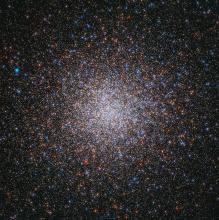Listen to today's episode of StarDate on the web the same day it airs in high-quality streaming audio without any extra ads or announcements. Choose a $8 one-month pass, or listen every day for a year for just $30.
You are here
Galactic Archaeology
Sagittarius, a sausage, a sequoia, and a Kraken appear to have something in common: All of them may be large galaxies that were absorbed by the Milky Way billions of years ago.
The Milky Way is a giant galaxy. It got that way by gobbling up other galaxies. Today, astronomers are tracking down the remnants of many of those galaxies — an endeavor known as galactic archaeology.
Many of the remnants are long ribbons of stars that loop through the Milky Way’s disk. Others are giant star clusters that loop far outside the disk. Stars in these ribbons and clusters are a bit different from the rest of the galaxy. They move differently, for example, and they have slightly different chemistry.
New tools help astronomers find those remnants. They’re using a space telescope, for example, to plot the motions of two billion stars.
The observations have revealed several possible big mergers when the Milky Way was young. The earliest was with a galaxy that’s been named Kraken, about 11 billion years ago. It may have been the most dramatic merger in the Milky Way’s history. Kraken appears to have been a few percent of the mass of the Milky Way, so it would have really stirred things up.
Over the following few billion years, the Milky Way swallowed several other big galaxies, including Sequoia, Gaia-Sausage, and Sagittarius — mergers that made the Milky Way even more impressive.
We’ll talk about a smaller merger tomorrow.
Script by Damond Benningfield



